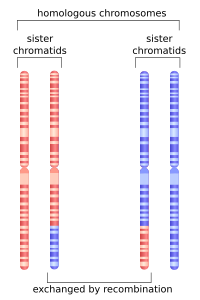
Photo from wikipedia
Pathogen-associated molecular patterns, including cytoplasmic DNA and double-strand (ds)RNA trigger the induction of interferon (IFN) and antiviral states protecting cells and organisms from pathogens. Here we discovered that the transfection… Click to show full abstract
Pathogen-associated molecular patterns, including cytoplasmic DNA and double-strand (ds)RNA trigger the induction of interferon (IFN) and antiviral states protecting cells and organisms from pathogens. Here we discovered that the transfection of human airway cell lines or non-transformed fibroblasts with 24mer dsRNA mimicking the cellular micro-RNA (miR)29b-1* gives strong anti-viral effects against human adenovirus type 5 (AdV-C5), influenza A virus X31 (H3N2), and SARS-CoV-2. These anti-viral effects required blunt-end complementary RNA strands and were not elicited by corresponding single-strand RNAs. dsRNA miR-29b-1* but not randomized miR-29b-1* mimics induced IFN-stimulated gene expression, and downregulated cell adhesion and cell cycle genes, as indicated by transcriptomics and IFN-I responsive Mx1-promoter activity assays. The inhibition of AdV-C5 infection with miR-29b-1* mimic depended on the IFN-alpha receptor 2 (IFNAR2) and the RNA-helicase retinoic acid-inducible gene I (RIG-I) but not cytoplasmic RNA sensors MDA5 and ZNFX1 or MyD88/TRIF adaptors. The antiviral effects of miR29b-1* were independent of a central AUAU-motif inducing dsRNA bending, as mimics with disrupted AUAU-motif were anti-viral in normal but not RIG-I knock-out (KO) or IFNAR2-KO cells. The screening of a library of scrambled short dsRNA sequences identified also anti-viral mimics functioning independently of RIG-I and IFNAR2, thus exemplifying the diverse anti-viral mechanisms of short blunt-end dsRNAs.
Journal Title: Viruses
Year Published: 2022
Link to full text (if available)
Share on Social Media: Sign Up to like & get
recommendations!